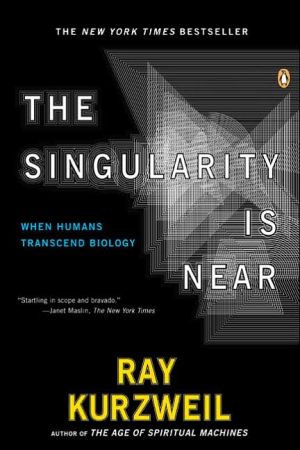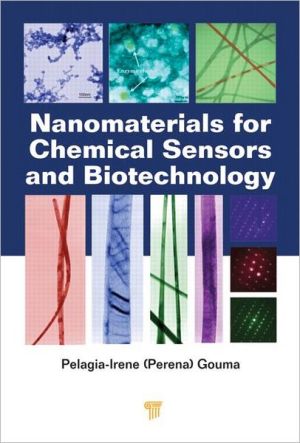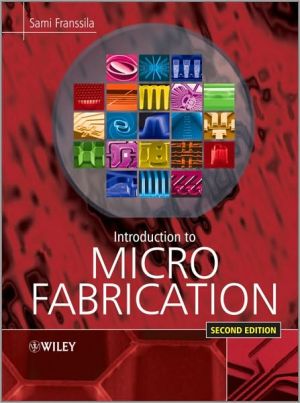Biomolecular Computation by Nanobiotechnology
Computers built with moleware? The drive toward non-silicon computing is underway, and this first-of-its-kind guide to molecular computation gives researchers a firm grasp of the technologies, biochemical details, and theoretical models at the cutting edge. It explores advances in molecular biology and nanotechnology and illuminates how the convergence of various technologies is propelling computational capacity beyond the limitations of traditional hardware technology and into the realm of...
Search in google:
Preface xiIntroduction: How to Go Beyond Traditional Computers 1Scientific Motivation Versus the Needs of the IT Industry 3Cutting-Edge Technologies for Building a Molecular Computer: From Nanobioscience and Nanotechnology to Nanobioinformatics 5Synthetic Biology 6Emerging Technologies for Protein Analysis: To Gain Information about Proteins, Protein Interaction, and Their Links to the Medicine 8Preliminaries in Nanobioscience 9Gedanken Model 10Some Concepts in Biochemistry 11Systems Biology 12Perspectives on Innovative Technologies for Biomolecular Computing: Benefits from Breakthroughs of Molecular Biology in the New Millennium 12Challenges from Real-World Applications 13Performances of Biomolecular Computing 13Technological Difficulties on Feasibility of Implementation of a Biomolecular Computer: Scalability, Reliability, and Controllability 13Back to Molecular Informatics: How to Use Molecules to Represent Information 15References 19The State-of-the-Art Molecular Biology and Nanotechnology 23Genomics 23Proteomics 26Cellular Structure from the Viewpoint of MolecularBiology 29Cell as a Nanobiomachine 31Moleware Mechanics for Cellular Nanobiomachine: Molecules Carrying Messages 33Molecular Informatics for Cellular Nanobiomachine 34Signal Transduction and Signaling Pathways of Cells 35The Link Between the Signaling Pathway and Molecular Movement 37The Links Between Signal Pathways and Neuron Function 37Measurement and Detection in Material Science: Towards Manipulation of Biological Molecules 38Pharmaceutical Nanobioinformatics 41"Naive" Thinking for Pharmaceutics 41Molecular Information Flow as a Possible Solution Towards Potential Application of Nanobioinformation Processing Systems 42References 45Nanobiomachines for Information Processing and Communication: Exploring Fundamental Principles of NanobioICT 49Mission of NanobioICT 50Information Theory of NanobioICT: Shannon Meets Feynman 53Embryonic Approaches to NanobioICT 56A Glance at Informatics of Moleware Communication 67An Informatics Form of a Molecular Viterbi Algorithm 76Network Coding in Molecular Informatics 80Quadruple Convergence 84References 87Computing by Biomoleware: Diverse Methods from Diversified Materials 91How to Build an Engineered Computational Nanobiosystem: Inspiration from Existing Nanobiomachines in Nature 92Nanobioworld Becomes Observable with the Help of Innovative Measurement Technology: Schrodinger's Cat Is at the Door 92Seeking a Movable Nanobiomachine: Postman in Moleware 94Methodology Learned from the Cell and Beyond 96Information Processing in Artificial Nanobiosystems: An Odyssey Beyond the Blind Watchmaker 97Molecular Complex as Memory-Memorizing Instead of Braining 100Molecular Clock-The Heart of Synchronous Moleware 105Moleware Coding in Nanobiomachine-A Solution from the Cell 108Computing by Nucleic Acids 114DNA Computing 115RNA Computing 121Surface-Based DNA Computing 123Nanobiotechnology for DNA Computing 125Computing by Biochemical Reactions in Microbes 127Information Processing Mechanism of Microbes 127Computing by Gene Operations in Ciliates 129Moleware Microarray 132References 136Theoretical Biomolecular Computing 141Basic Concepts in Computer Science for Molecular Computing 142Formal Language 143Automata 145Formalized Molecular Computing 146H-System 147P-System 150Rediscovering the Informatics Structure of the Biomolecular Computing System: An Informatics View of the Formal Processes of the Biomolecular Computing H-System 153How to Design Algorithms for a Molecular Computer 157Observing Complexity from Benchmarks 157Obtaining Efficiency from Pathway Designs: Algorithmic Design Through Examples 160Touchstone for Nanobio-Oracle: Moleware Logic 171Consistency of Computing Operators and Feasible Experimental Supports: Verification of Logic Process 171Formalized Method for Moleware Logic 173References 179Cellular Biomolecular Computing Based on Signaling Pathways: Kinase Computing 181Cellular Pathway: Another Ubiquitous Society in Another Universe 182Ubiquitous Cell Communication for Parallel Information Processing 182The Molecular Switch as a Bridge Between Cell Communication and Molecular Computing 184Binary Information Representation by Molecular Switch 185Computing Formalized as an Automaton 188Example: Designing an Automaton for Kinase Switches Guided by GTPase 190Information Structure for Automaton-Based Computing 191A Computing Model Based on Pathway Units with Turing Computability 193From Automaton to Rewriting: Toward General Parallel Computing 199Formalization 199Transition from Hypergraphs to Bigraphs 203McNaughton Language, Confluent Rewriting, and Controlling with the Structural Characteristics of MSP-Automaton 205Designing a Rewriting Process by Pathway Units Based on MSP-Automata 209A Compiler: Translating Moleware Language into Programmer-Friendly Informatics Operators 210Systematically Understanding the Interaction Structure in Pathway Computing 212Generalized Form for Computing 212Blueprint of a Kinase Computer 214Quantitative Description for Biochemical Features 214Materials for Information Processing 217Controllability Under Protocols in Bioinformation 218References 221Comparison of Algorithms for Biomolecular Computing and Molecular Bioinformatics 223Formal Characteristics of Algorithms for Biomolecular Computing 224DNA Computing 225Surface-Based DNA Computing 225H-Systems 225P-Systems 226DNA Computing Method by Ciliates 226Interactions in Molecular Bioinformatics Algorithms 227Example 1: Interaction of GTPases 229Example 2: Interaction of Kinases/Phosphatases 232Common Points of Biomolecular Computing and Molecular Bioinformatics for Algorithms 239Example: Describing Cellular Pathways by Graph Rewriting 242Exploring Logical Description for Molecular Bioinformatics Based on Formalization and Abstract Operations 245References 250Emerging Nanobiotechnology in Multiple Disciplines 253The Tale of Two Media: Molecular Electricity and Biomolecular Signaling 253How Small Can an Information Processing System Be Made? 254Informatics of Porphyrin Systems 255Transition from the Supporting Points to Integrations of Different Aspects of Molecular Information Processing 260Cell Communication for Engineering Purpose 263From Bit Level of Information Representation to Observe Cellular Communication 265The Biophysical Effectors of the Molecular Information Flow 266Effects of Molecular Protocols by the Internal Components of Cells 266Control Nodes in Moleware Communication Networks 267Collision-Avoid: An Issue on Efficiency of Moleware Communication in Cells 268References 272About the Authors 275Index 277








